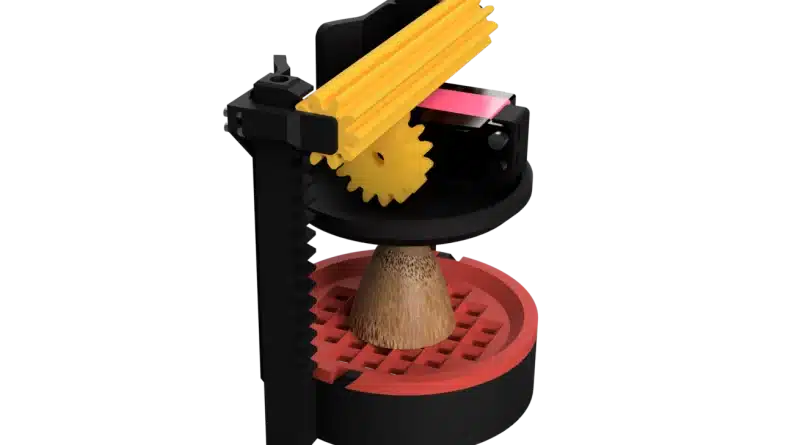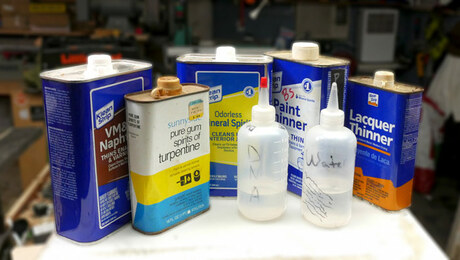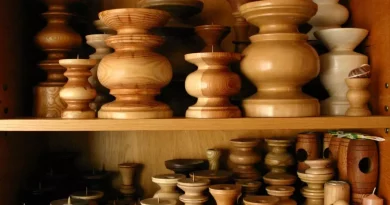Woodturning Project – Is a Potato Masher in Your Future?
Before I began to turn wood, I took a couple of night classes in woodturning. One of the first things I made was a potato masher. In my mind, it is still a great beginner’s project and when I returned to woodturning some years later, I made another one.
As you begin to turn, certain skills need to be developed. The potato masher is a good place to begin. Generally one starts with a square of wood about 2 3/4″ on the side and about 11″ long. This is marked on either end to find the center and then mounted between spur and tail stock centers. These operations are common to most spindle turning whether it be chair legs or candlesticks.
The wood-turning lathe is designed to turn wood around. This square wood blank must now be made round and the tool for this is the roughing gouge. Again, this is the tool that most spindle turners reach for first. It efficiently and effectively removes the corners of the square and renders it round. With practice, it will give a smooth finish that requires little sanding.
Since most spindle turning begins in exactly this way, each project requires its peculiar measures as it goes on. In this case, we wish to have two distinct areas of the finished piece, the head, and the handle. This will give the beginner practice in turning a large cylinder and then quickly removing wood to get down to a smaller cylinder. Now it is necessary to refine the shape.
While a more experienced turner will often turn to a skew chisel for the refining cuts, a beginner will likely find a spindle gouge more to his or her liking. First, though, the final sizes of the coves and beads need to be established. Again, this is a skill that will be reused and refined throughout a woodturner’s lifetime.
A set of calipers is opened to the desired diameter and held in the left hand. As a parting tool is held in the right hand it is allowed to cut into the wood until the caliper slips over the cylinder. Thankfully, this is a lot easier to do than to consider.
With the diameters established, it is now necessary to smoothly connect them using the spindle gouge. This will establish the feel of the handle and the balance for the head. Finally, the face of the head is turned down as far as possible, the end of the handle is beaded for decoration and to act as a stop if necessary, and the whole thing is sanded if desired. A coat of mineral or vegetable oil could be added to the kitchen at this time.
The last thing to do is part it off and trim the ends where the waste wood is removed. Now you have a potato masher, or, in my case at least, a carver’s mallet. These make great tools in the woodworking shop for gentle persuasion as needed. It may be that a potato masher was only in your future if you make another.




